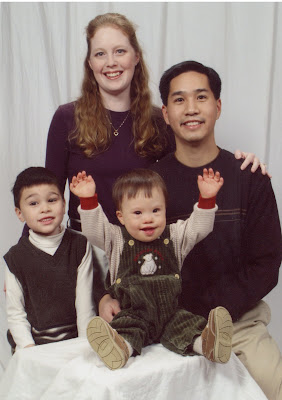And the best way for suburban Christians to build community is to recover the practice of hospitality. Charity notes, "Hospitality can be as traditional as inviting neighbors over for a meal, or as radical as creating new neighbors by inviting missionaries or a struggling family to temporarily share your home. Hsu also suggests things like sharing lawn equipment or transforming personal space, like garages, into community space for neighborhood gatherings. Mostly, I've heard that hospitality is creating space in my life to share with other people. When my home, my hands, and my heart are available, I can help build community."
And particularly eloquent, I thought, were Llama Momma's comments:
. . . And the single Mom on the corner who is too busy to care much where her kids are most afternoons. Letting her know that I care about her and her daughers; giving her my phone number and letting her know that one of her girls is at my house almost every day, so if she needs her back home, to call; and welcoming "one more" at our lunch table most afternoons. Filling her up with hugs and healthy snacks and a listening ear. This is community.Here are links to previous posts on chapter 5 on branding and identity, chapter 4 on consumerism, chapter 3 on commuter culture, chapter 2 on housing, and chapter 1 and the introduction on suburbia in general.
Watching the children play t-ball in the front yard with all of the neighborhood kids and Moms, realizing I'm almost out of milk and my husband's out of town. Asking the neighbor Mom to keep an eye on the boys while I run to the store. This is community.
And when a neighbor's husband comes home late and drunk, and domestic violence becomes a reality inside her "safe" space, she realizes she is not alone. She has community. So at midnight, her and her babies come knocking on my safe house. This is community.
Okay. I've gone on too much. I guess I am just so passionate about this because I am experiencing it in my neighborhood and it is powerful and wonderful. I have friends I wouldn't have had if I had stayed inside, and I am better for those friendships.


3 comments:
Yes, I really loved that comment by Llama Mama too. Indeed, it has stayed with me over the days.
I am finding that an important first step in building community in my neighborhood involves something as simple as a wave or as easy as a "hello." These things are so disarming to people, and have often led to conversations over the fence for me.
Aw, shucks.
I still have your book on my nightstand, along with a dozen others, and I still intend to write a review. I think I engage with the book quite differently from LL and Charity, in part because I am smack-dab in the middle of suburban life, but not the typical suburbanite.
Post a Comment